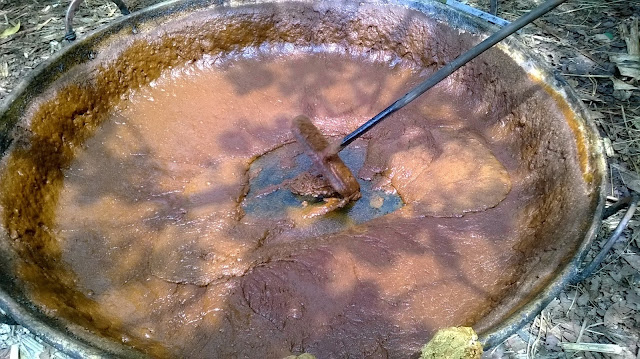The room is dark and cool.
It looks like no one has been in for quite some time. I make my way inside
and look around for a decent place to snuggle into. There seems to be none, the room is bare
except for a cloth covered thing kept vertically in the corner.
I explore around and find a perfect opening
for me to slide into. There is a large round smooth surface, beyond which there
is a long bar with cold, thin metal strips across it.
But the metallic strips are smooth and I make my way to the top. Just as I wrap myself around the wooden bar for my snoozy, the whole thing tilts and tips over.
But I am too sleepy to bother and I snuggle into the perfectly comfortable position and a dull, lethargic feeling washes over me and soon I float away into dreamland.
But the metallic strips are smooth and I make my way to the top. Just as I wrap myself around the wooden bar for my snoozy, the whole thing tilts and tips over.
But I am too sleepy to bother and I snuggle into the perfectly comfortable position and a dull, lethargic feeling washes over me and soon I float away into dreamland.
I have no idea how many hours or days I have slept, but
suddenly there are voices right in this very room. A harsh light is switched
on, and footsteps approach me rapidly.
“Oh, no, the sitar has fallen... how could it,.... this is not the way I had kept it, oh no.....” a woman’s voice cries.
The man replies “Oh I
must have kept it down when I was fixing the light in this corner”
“But this is not the way to keep it, no it has fallen over..” and gentle hands
grasp the very bar on which I have wound myself and turn it over.
I jerk out of the way.
I jerk out of the way.
“Oops, there is something inside, looks like a frog has got
in”.
Oh woman! Mistaking me, for my very own meal.
Oh woman! Mistaking me, for my very own meal.
“Oh is it? I’ll get
him out” and the cover is being opened.
Oh what nerve!
Oh what nerve!
The light shines
right thru and looks like I have no place to hide.
“Wait, don’t just open it, check whether it really is a
frog”
“Yeah I’m doing just that”
“No, don’t! Just feel
it from outside” and the woman actually pats me!
Oh what cheek.
“Doesn’t feel like a frog”
Oh what cheek.
“Doesn’t feel like a frog”
Now the man walks over and pats around. I hiss.
“Was that a hiss?”
Oh these humans! How loud does one have to hiss for them to know that it is actually a hiss!
And I am being patted again! Now I hiss real loud.
“Was that a hiss?”
Oh these humans! How loud does one have to hiss for them to know that it is actually a hiss!
And I am being patted again! Now I hiss real loud.
“Oh yes there is a snake in there” the man says.
“Let it be, leave it alone, it must have been resting”... Some sense finally!
“Wonder which one it is. May be if we wait, it might crawl out”........Oh really?
“It is already too late now, we’ve got to be up early tomorrow, and it is Ok if I don’t loosen the sitar strings for a week. We can check whether it is still inside after we return”.......Oh you bet!
Thankfully they switch off the lights, and go away leaving
me alone in the comfortable darkness. Looks like I have a whole week of peace
and quiet, now. So I better get back to catching up on my glorious beauty
sssssssleeeeeeep.
p.s. When we returned after a week, Mr. Hisser was still hibernating inside the cloth cover of the sitar. We carried the whole thing out into the bushes and gently opened the knot. The snake slid out and vanished into the greenery at an astonishing speed.
p.s. When we returned after a week, Mr. Hisser was still hibernating inside the cloth cover of the sitar. We carried the whole thing out into the bushes and gently opened the knot. The snake slid out and vanished into the greenery at an astonishing speed.






















































